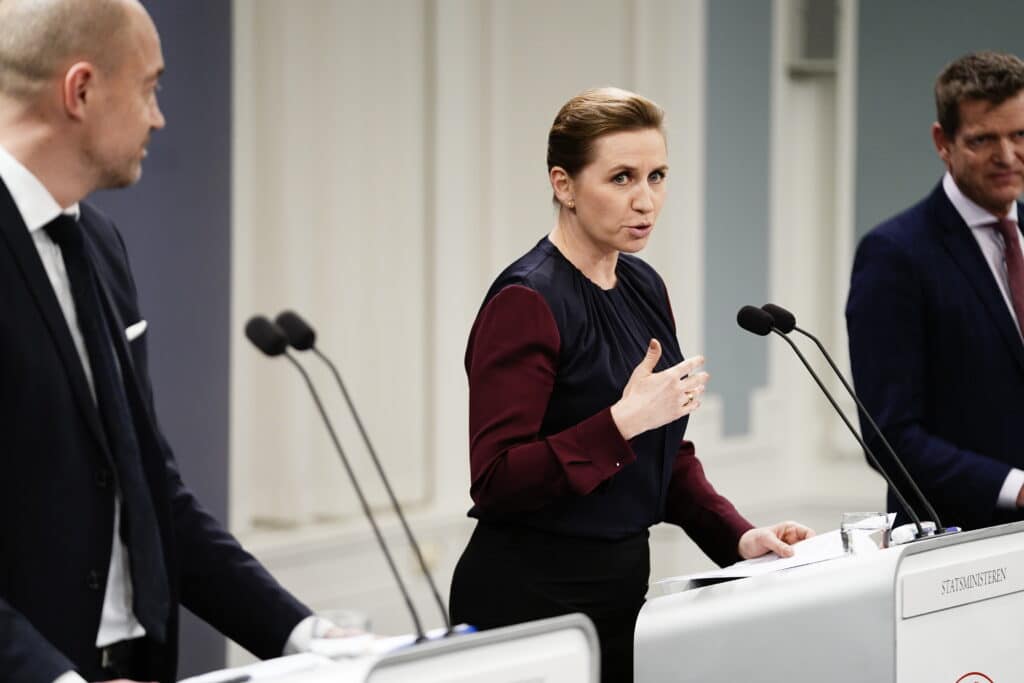The reason for this is that while the omicron variant is surging in Denmark, it’s not placing a heavy burden on the health system, and authorities no longer consider COVID-19 a critical disease. Maybe the rest of the world will take note, especially since Denmark has a high vaccination rate, protecting the population from serious illness from coronavirus and its variants. As reported by the AP:
The head of the Danish Health Authority, Søren Brostrøm, said his focus was on the number of people in ICUs, rather than on the number of infections
COPENHAGEN, Denmark (AP) — Denmark on Tuesday became one of the first European Union countries to scrap most pandemic restrictions as the Scandinavian country no longer considers the COVID-19 outbreak “a socially critical disease.”

The reason for that is that while the omicron variant is surging in Denmark, it’s not placing a heavy burden on the health system and the country has a high vaccination rate, officials have said.
Denmark, a nation of 5.8 million, has in recent weeks seen more than 50,000 daily cases on average while the number of people in hospital intensive care units has dropped.
The head of the Danish Health Authority, Søren Brostrøm, told Danish broadcaster TV2 that his attention was on the number of people in ICUs, rather than on the number of infections. He said that number had “fallen and fallen and is incredibly low.” He said 32 of the coronavirus patients are in ICUs. Several weeks ago, it was up at 80.
The most visible restriction disappearing is the wearing of face masks, which are no longer mandatory on public transportation, shops and for standing clients in restaurant indoor areas. Authorities only recommend mask use in hospitals, health care facilities and nursing homes.
Another restriction that no longer is required is the digital pass used to enter nightclubs, cafes, party buses and to be seated indoors in restaurants.
“I dare not say that it is a final goodbye to restrictions. We do not know what will happen to the fall. Whether there will be a new variant,” Prime Minister Mette Frederiksen told Danish radio.
Health authorities urged Danes to get tested regularly to keep an epidemic surveillance and if needed, “react quickly, if necessary,” as Health Minister Minister Magnus Heunicke said last week.
The Danish government has warned that Denmark could see a rise in infections in the coming weeks and said that a fourth vaccination shot might be necessary.
The restrictions were originally introduced in July but were removed about 10 weeks later after a successful vaccination drive. They were reintroduced when infections soared.
In 2020, Denmark became one of the first European countries to close schools because of the pandemic and sent home all non-critical public employees. In neighboring Finland, COVID-19 restrictions will end this month with Prime Minister Sanna Marin saying her Social Democratic-led government would negotiate with the other parties in parliament the timetable for the removal of the measures.
On Monday, border controls at the internal borders between Finland and the other Schengen countries that form Europe’s ID check-free travel area, ended. That restriction was introduced at the end of December to slow down the spread of the omicron variant. Travelers coming from outside the EU will continue to meet border controls at least until Feb. 14. February.
On Tuesday, Norwegian daily Dagbladet reported the first case of COVID-19 ever on the island of Utsira in the North Sea.
“We have avoided it for two years,” mayor Marte Eide Klovning told Dagbladet, adding that the island’s 188 inhabitants had been vaccinated. It was unclear how the virus had reached the island, sitting about 120 kilometers (75 miles) south of Bergen, Norway’s second-largest city.
By JAN M. OLSEN






